Culture
Our Gods Are Coming Home: Tenth Century Baroli Natesa Icon Stolen From A Rajasthan Temple Returned To India After Two Decades
S Vijay Kumar
Jul 30, 2020, 08:19 AM | Updated 08:19 AM IST
Save & read from anywhere!
Bookmark stories for easy access on any device or the Swarajya app.
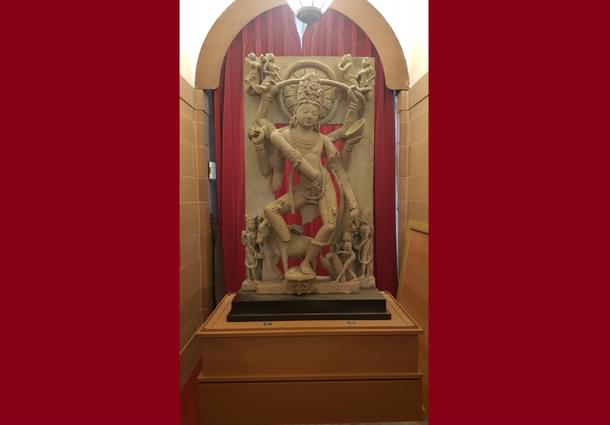
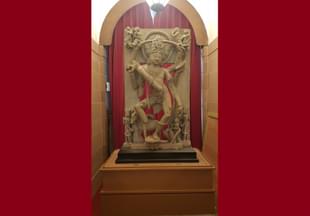
In yet another triumph for activists involved in retrieval of stolen Indian antiquities, 'Natesa' a 10th century idol of Shiva, originally from the Ghateshwar Mahadeva Temple in Rajasthan, was today repatriated to the Archeological Survey of India by the Indian High Commission in London.
HCI with support of HM Government repatriates to Archeological Survey of India, the 10th Century idol of Lord Shiva - 'Natesh', stolen in 1998 from Ghateshwar Temple, Baroli, Rajasthan. #IndiaUK @TheNehruCentre @DCMS @ASIGoI @authoramish @MEAIndia pic.twitter.com/vr6N770k47
— India in the UK (@HCI_London) July 29, 2020
Stolen in 1998, this idol from Ghateshwar Mahadeva temple village of Badoli on the outskirts of Rawat Bhata town in Chittorgarh district, has had a tortuous journey to this point.
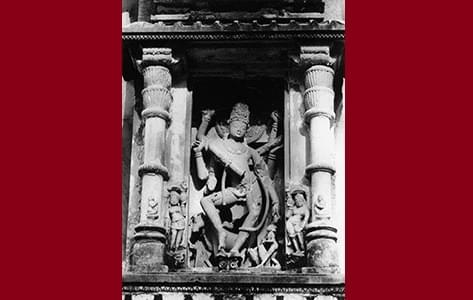
The thieves had replaced it with a fake, and smuggled the original out of India.
A similar Nataraja image was found by the roadside near Rawat Bhata Nuclear Power Plant in November 1998 and was identified as this one by local officials. However, in 2003, Rajasthan Police established that this image was a fake.
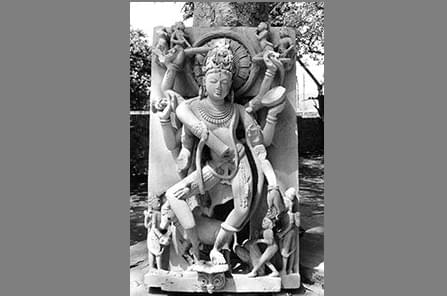
Eventually, London collector J Kasmin had possession of it in 2005, and he handed it over to the Indian High Commission at that point.
Based on an expose by Peter Watson in the book and the BBC programme “Sotheby’s, The Inside Story” (1997), in June 2002 the Rajasthan police, under the then Superintendent of police Anand Srivastava, launched an investigation titled ‘Operation Black hole” against Vaman Ghiya.
Ghiya was the proprietor of a large handicrafts showroom in Jaipur .
Over the following few days, the police conducted raids on six of Vaman Ghiya properties in Jaipur as well as storage facilities in Mathura and Delhi during which 506 artefacts were seized.
Of these, 485 were confirmed as antiquities by ASI.
After a year-long surveillance, Vaman Ghiya was arrested in July 2003. He was charged with stealing 20000 pieces of art and laundering them via a host of Swiss front companies and Sotheby’s – The International auction house.
Farm houses in Delhi linked to Ghiya were raided and he was convicted in 2008 and sentenced to life imprisonment.
However, in January 2014, the conviction was quashed by an appeals court (Rajasthan High court) because of procedural irregularities during the police prosecution and partially because India had not repatriated even a single piece of art allegedly smuggled abroad by Ghiya.
Dr Kirit Mankodi played an instrumental role in this case. The duplicate Natesa was deposited at Rawat bhata Police Station. Dr Mankodi photographed it along with Prof. Jagat Narayan of Kota, and provided the photographs to ASI Jaipur.
He also spoke to Anand Srivastava, who in April 2010 gave him the actual letter confirming the handover of the sculpture to the Indian High Commission, London.
Since then, Dr Mankodi has been diligently following up the case. He was also responsible for escalating it to the DG ASI and the PMO.
The India Pride Project has been making efforts to reopen the cases pending from Operation Black Hole. To this end, IPP founder Vijay Kumar followed up the case during meetings with ASI in 2014 and with High Commission, London.
Three years later, these efforts began to bear fruit as the sculpture was inspected by ASI in 2017 in London and it was confirmed that the Natesa was indeed the looted original sculpture.
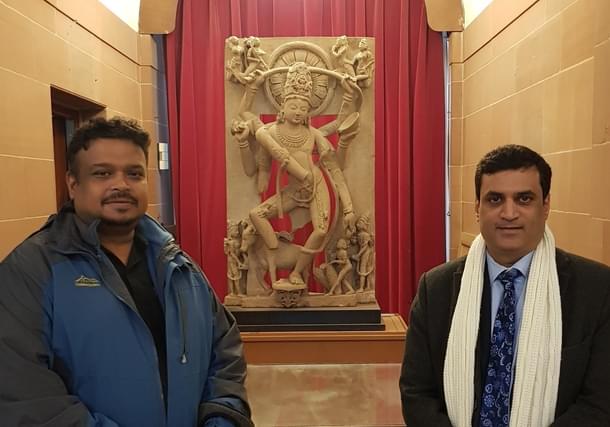
And now, finally, thanks to prompt efforts by Rahul Nagare and the Indian high commission in reopening all the old documentation and persistent followup, the Natesa idol is being virtually handed over to India and will be finally coming home after 22 long years abroad.
It is pertinent to point out that despite compelling evidence, another suspected Ghiya linked sculpture, the Yogini Vrishanana which was returned to India in 2013 was treated as a one off restitution and not linked to Operation Blackhole or the Ghiya case appeal.
This sculpture was part of numerous looted aretfacts from an unprotected site in Lokhari – a village in the Mau subdivision of Banda district of Uttar Pradesh.
The sculpture Yogini Vrishanana, weighing nearly four hundred kilograms, was taken to France illegally. It was acquired by the late art collector, Robert Schrimpf, who’s wife Martine Schrimpf, informed the Embassy of India in Paris of her desire to donate the object.
The then minister of culture Chandresh Kumari Katoch directed the National Museum, New Delhi to bring back the sculpture. It finally returned safely to India in August 2013 to a grand celebration.
We take this opportunity to make an appeal to any collector in possession of the attached goat headed Yogini, a sister sculpture looted by the same gang to come up and give it back to India. This was also published by Peter Watson in his book and has not been seen for the past 22 years.
The ASI and Ministry of Culture should also use this restitution as a much needed impetus to reopen the Vaman Ghiya case and resurrect Operation Blackhole and go after the thousands of artefacts stolen since the 1960s looted by the same gang and also appeal his acquittal.
Vijay is a shipping professional working in Singapore. He is an avid heritage enthusiast and runs poetryinstone, a blog aimed at promoting awareness of Indian art.





